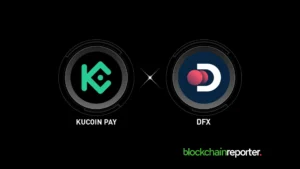
During a bear market, less experienced traders tend to panic because of a lack of information about the situation. The cryptocurrency market does not go up for a trader to profit, but for the mere reason it needs to move. At this point, identifying the pattern and trend by which the market is moving to see the next move comes in handy.
Notably, there is a higher risk of liquidation in a shorter trading time than a much more extended period. The speculative nature of such a market ensures this. In this article, we shall venture into trading patterns that investors use in a bear market and what it means to be in a bear market:
What is a Bear Market?
Out of all the definitions out there about the bear market, the one that stands out is defined as when a market has fallen 20% from its high over some time. The period is usually two months or more.
Methods to Look Out for in a Bear Market
In a bear market, the investors have low confidence as they anticipate losses, the market moves lower. Selling pressure increases at this point and sharper falls begin as the buyers move away from the market. The price moves further down until selling dries up with confidence returning and buyers reappearing.
Using Patterns for Swing Trading
Traders use automated chart pattern recognition to oversee swing trading opportunities to use in a crypto bear market. Swing trading holds a position, either long or short, for more than a single trading session. It is, however, not longer than several weeks or a couple of months.
Swing trading is purposed to capture a chunk of a possible price move. Swing trading allows investors to take sedated moves instead of running up and down with the rest of the market. It gives them a chance to identify the next price move, enter a position, and capture massive profits.
In a bear market, traders can make money from micro-trends, buy the lows and sell at highs.
Tracking Support and Resistance Levels
Support is a price level on the trading chart above the current market price, where the prices stop falling, change direction and start going up. It can also be described as a floor supporting the prices. On the other hand, resistance is a price level above the current market price where the prices stop rising, change direction and begin to fall.
When traders identify these two areas or points, they can act as an entry or exit point from a bear market. To explain more, this is because when the market price reaches a point of support or resistance, it will either bounce away or keep in its direction until the next support or resistance level is hit.
For the traders to time their trades, they take that the cryptocurrency will not break the support and resistance level at the market. When either of the levels halts the price, they know where it is headed; hence they can plan to maximize profits in the long run.
Using Reverse Candlestick
Candlestick patterns are defined as technical, financial analyzing tools to depict the daily price movement data shown on a candlestick chart.
Bearish reversal patterns appear once an uptrend comes to completion, meaning that the price may reverse and turn down. It indicates that the closing price for the period of stock was lower than the opening price. Usually, it brings about a selling pressure to the investors due to a price fall.
Reverse candles highlight where significant power clashes exist between buyers and sellers. Naturally, these should be utilized together with other tools and methods, as is the case with any analysis. Traders can also use reversal candles to evaluate the risk and determine when the trader should leave (stop placement).
Tracking Other Altcoins
In the cryptocurrency space, most of the time, altcoins move in similar patterns. When the price of a primary cryptocurrency such as Bitcoin starts going up, others start to follow. When the price declines, the same is likely to happen to all the others too shortly afterward. Traders can use this as a pointer to invest in based on the general trend in the market.
Cryptocurrency markets change drastically without notice because of their volatile nature. It can be a hassle trying to track all the coins at once, and hence traders may sometimes opt for cryptocurrency portfolio trackers. They allow traders to monitor price changes at any time of the day and stay up to date. Crypto tracking platforms such as CoinMarketCap provide all the vital information on all the cryptocurrencies and can be used to track other altcoins.
Tracking Cryptocurrency Futures
Future contracts in the cryptocurrency space allow traders to “predict” future prices of a coin agreed on price. Investors can secure a specific price and shield it from the volatility in the crypto space that may either be bearish or bullish.
How they work is that when the investor believes that the price of the altcoin will rise, they will buy into futures, and if the market price goes up, they gain a profit from that and vice versa. However, it depends on the margin and leverage used.
For traders, when they observe cryptocurrency futures against the current prices, they can quickly determine the general feel of the market. They can also predict the liquidity and short selling pattern that the crypto futures is likely to bring up; hence can opt to stay or jump off the bear market at the current prices.
Wrapping Up
Traders research markets before investing to minimize the risk and maximize profits as much as possible. However, trading in a bear market can be pretty tricky without the right strategies. By employing the proper patterns in their research and looking into the cryptocurrency of choice, these traders increase their profit opportunities.
Note that buying on speculation is the worst mistake as it leads to buying high and selling low, incurring losses. New investors rush into the market just for the rally and not on the coin’s future mindset. Cryptocurrencies are volatile, and predicting future prices is difficult to do. However, studying the patterns and using them to your advantage is a step in the right direction.








